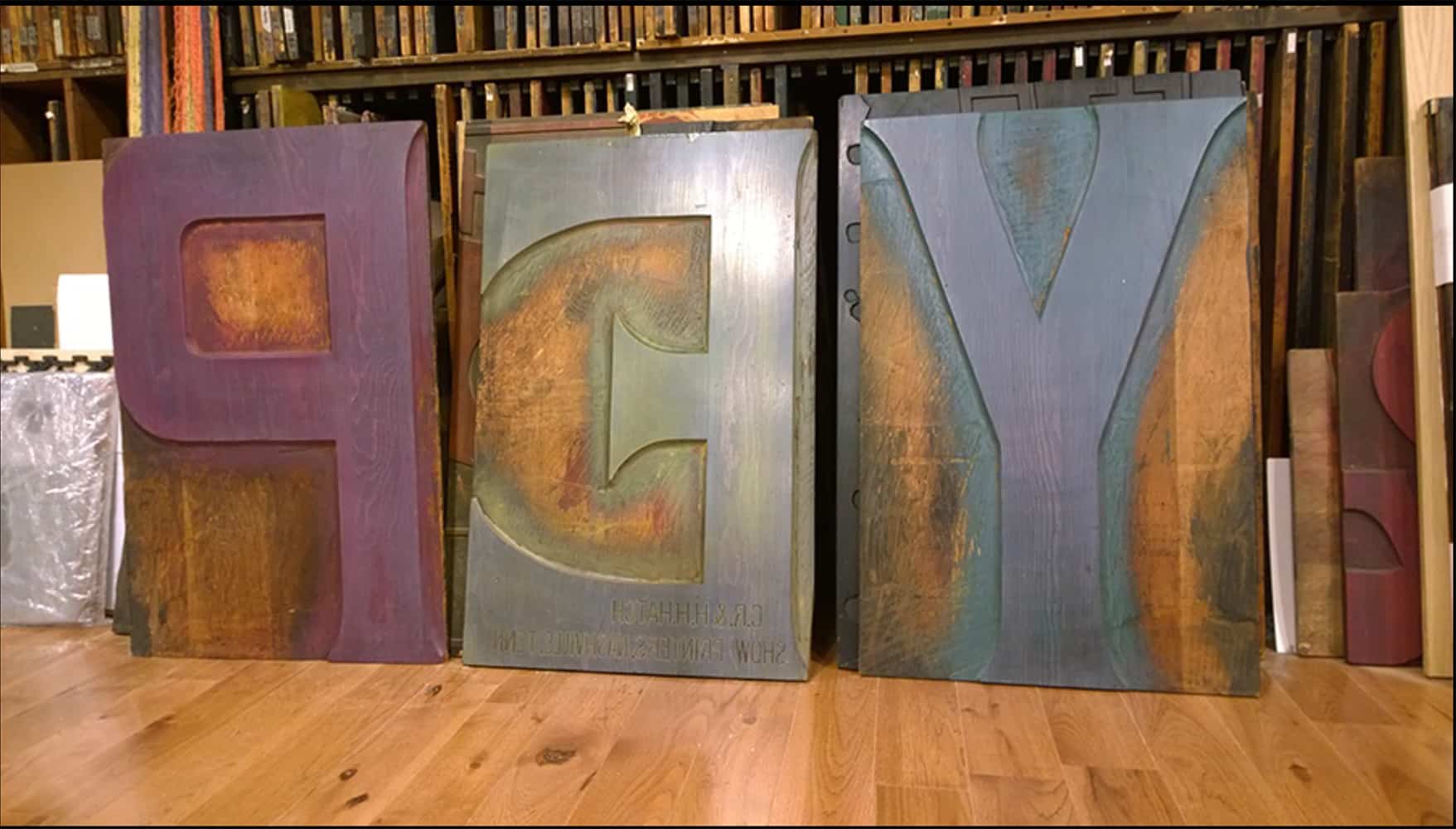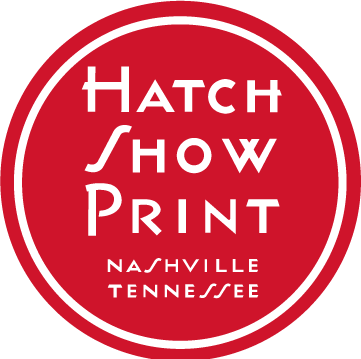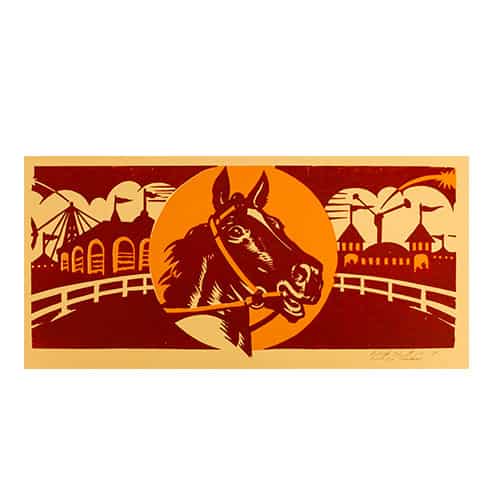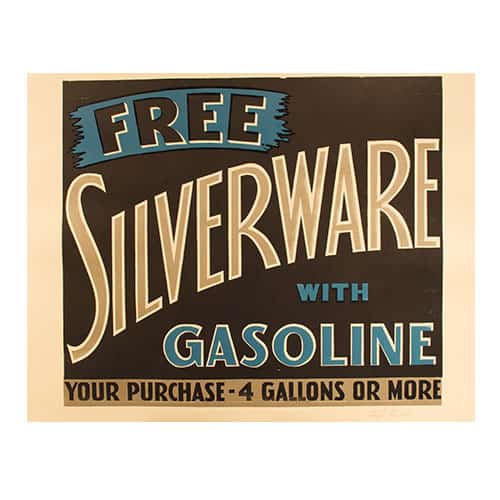Well-crafted Type And Advertising Blocks Make Art In The Twenty-first Century
Early in the history of Hatch Show Print, customers sometimes called upon the shop to print large-format advertising. As the twentieth century dawned, that meant billboards or large ads to be pasted on barns, grocery stores, and other commercial buildings located along a town’s main street. The large-format caught the attention of passersby on foot, in wagons, or in cars.
Eye-catching graphics—whether they included imagery or stylized lettering—attracted notice. Critical information—who, what, when, where, and how much—was printed using hand-set wood and metal type, and would have been pasted up side by side to make complete ads. Unfortunately, few if any of these original, large-format advertisements survive, but the shop still has the type and many of the large wood blocks that were designed and carved by the staff.
Recently, we have been exploring our shelves of blocks, reminding ourselves what this trove of advertising and design history contains. We’ve found a few blocks that haven’t really been printed since they were in use to tell or sell something to generations past. So, we decided to print them again.
Subjects range from auto racing to a gift offered with the purchase of silverware, from adult B-movie theater graphics to fun fair mastheads. We have printed about a dozen blocks that have not touched paper since they were last used, in the early to mid-twentieth century.
These are now available for sale in our Haley Gallery, alongside prints featuring our largest wood type.
The shop’s type collection contains two fonts of wood type, forty and eighty inches tall, called “one sheet” and “two sheet” type, respectively. At the turn of the twentieth century, the largest sheet size available to commercial printers was approximately thirty by forty inches, so printers had to piece together billboard-sized advertisements, and other large-format ads, using a set of sheets that would be pasted up together, side by side, row upon row.
Both fonts of type were carved in the print shop by hand. At the time, for a print shop employing skilled poster designers, it would have been a simple task to carve a standardized set of letters in each font, uppercase only, each letter having the same width, with the exception of the uppercase. This was more cost effective than having one of the type manufacturers (most of whom were on the East Coast at that time) manufacture type and transport it to Nashville. This type was carved between 1879, when the shop opened, and 1885.

These days, most billboards are made of vinyl or lights, but Hatch type stays inky. We’ve printed every letter of the one-sheet type that we can, and used a few techniques to develop interesting print textures.
Last summer, 2016 Visiting Artist David Wolske created and printed six different editions of three color prints using selections of our two-sheet type.
These prints could be put to good use again, sending big messages on billboards across the South . . . but until we find an available billboard, you can see these prints in person, in Hatch Show Print’s Haley Gallery.



